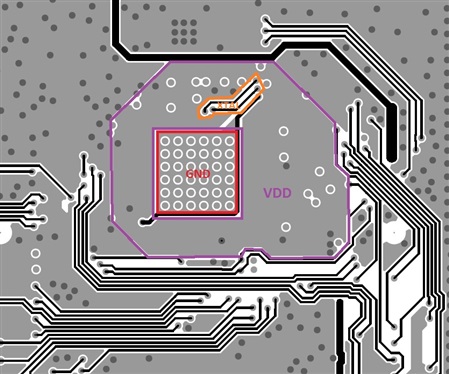Hi,
after analyzing the CC2538&CC2592 layout on pdf, I'm wondering about planes developed on signal inner layer.
- GND plane:
- Thermpad. There is a GND plane under QFN's thermpad.
- Resting parts of the layer which not belong to any other signal or power line.
- PWR plane:
- VDD. There is defined a power plane to connect all power pins on CC2538.
- XTAL traces:
- Both xtal traces for main oscillator are inside the power plane. Even when they have short length, could this 'shielding' with VDD plane affect to xtal signal integrity? Or do you assure there is no problem to do it so?
- RF signal:
- Power plane has some part below the RF traces, when guidelines recommend to not place nor power traces neither power planes under RF part. does this configuration decrease the RF performance?
- In case, CC2592 is not being used, could the power plane be placed under RF part? Or do you suggest another option?
KR!


